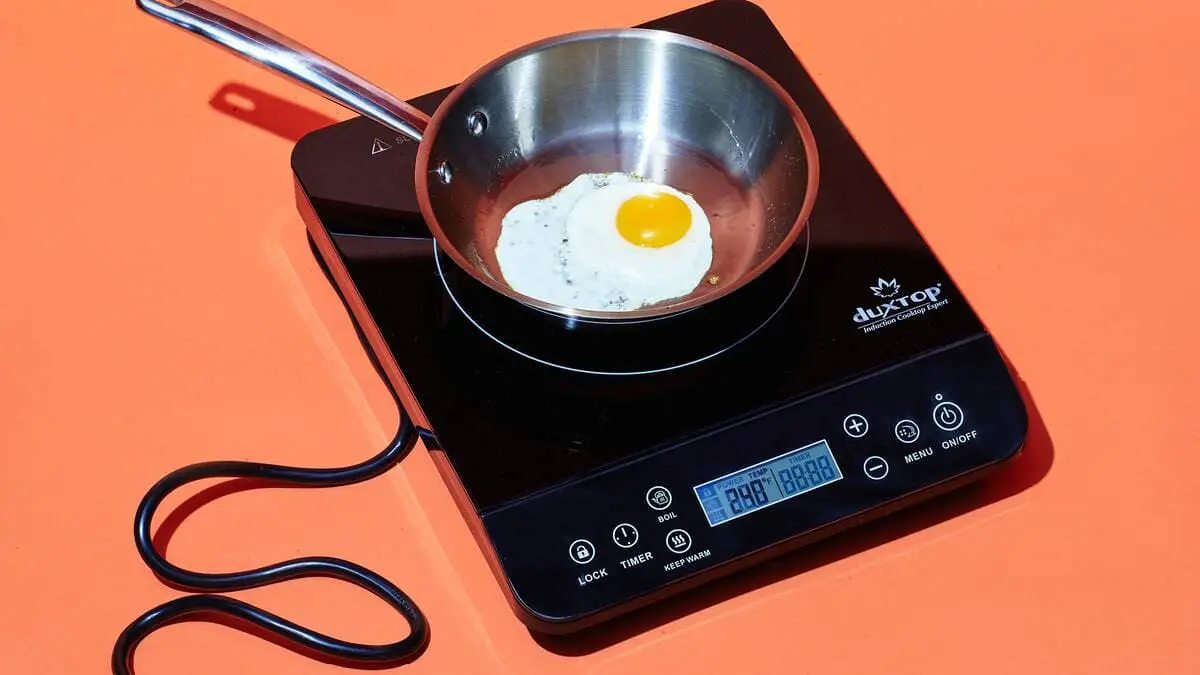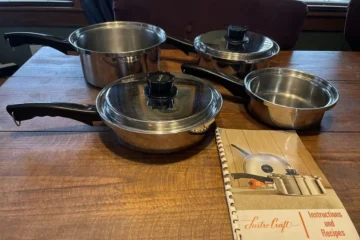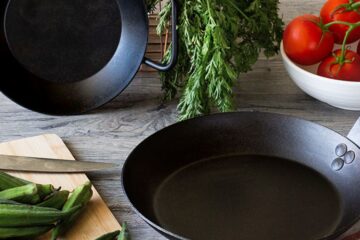When it comes to cooking with an induction cooktop, one of the most common questions is whether or not you need special cookware. The answer is yes, but it’s not as complicated as you might think. Induction cooktops work by creating a magnetic field that heats up the cookware directly, so the key is to use cookware that is magnetic.
Most stainless steel cookware will work just fine on an induction cooktop, as long as it is made with magnetic stainless steel. Cast iron and some types of carbon steel are also magnetic and will work well on an induction cooktop. However, if you have cookware that is not magnetic, it will not work on an induction cooktop, no matter how high-quality or expensive it is.
What is Induction Cooking?
Induction cooking is a method of cooking that uses electromagnetism to generate heat directly in the cookware. It is different from traditional gas or electric cooking methods, which use a heat source to transfer heat to the cookware. Induction cooking uses an electromagnetic field to create heat, which is then transferred directly to the cookware.
The basic principle of induction cooking is simple. When an induction-ready pot or pan is placed on the cooking zone, the magnet under the glass is activated, and the molecules in the cookware are agitated. This agitation creates friction, which in turn creates heat. The heat is then transferred directly to the cookware, which heats up quickly and evenly.
One of the key benefits of induction cooking is that it is highly efficient. Because the heat is generated directly in the cookware, there is very little wasted energy. In fact, induction cooking is up to 50% more efficient than gas or electric cooking. This means that you can cook your food faster and more efficiently, which can save you time and money in the long run.
Another benefit of induction cooking is that it is very precise. Because the heat is generated directly in the cookware, you have a high degree of control over the temperature. This means that you can cook your food to the exact temperature that you want, which can result in better tasting food.
In order to take advantage of the benefits of induction cooking, you will need to use cookware that is compatible with induction cooking. This means that the cookware must be made of ferromagnetic materials, such as cast iron or some types of stainless steel. If you are not sure whether your cookware is compatible with induction cooking, you can test it by placing a magnet on the bottom of the cookware. If the magnet sticks, then the cookware is compatible with induction cooking.
How Does Induction Cooking Work?
Induction cooking is a modern method of cooking that uses electromagnetic energy to heat the cookware placed on top of it. The cooking surface itself stays relatively cool to the touch, making it a safer and more efficient way to cook.
Here’s how induction cooking works:
- The induction cooktop generates an electromagnetic field.
- When you place a pot or pan made of ferrous materials, such as iron or steel, on the cooktop, the magnetic field induces an electric current in the pot or pan.
- The electric current generates heat, which is transferred to the food inside the pot or pan.
Because the heat is generated directly in the pot or pan, induction cooking is more energy-efficient than gas or electric cooktops. It also heats food faster, making it a great option for busy households.
One thing to keep in mind is that not all cookware is compatible with induction cooking. To work with an induction cooktop, your cookware must be made of ferrous materials and have a flat bottom. Here are some examples of cookware that works well with induction cooking:
- Cast iron
- Stainless steel
- Enamel-coated cast iron
- Carbon steel
Cookware made of non-ferrous materials, such as aluminum, copper, and glass, will not work with induction cooktops unless they have a layer of magnetic material on the bottom.
Do You Need Special Cookware for Induction?
When it comes to induction cooking, one of the most common questions is whether or not special cookware is required. In short, the answer is yes. However, it’s important to understand what makes cookware suitable for induction and what the benefits of using induction-compatible cookware are.
Ferromagnetic Materials
Induction cooktops work by creating a magnetic field that induces electrical currents in the cookware, which in turn generates heat. Therefore, cookware must be made of a ferromagnetic material that can be magnetized, such as cast iron or some types of stainless steel.
Testing for Induction Compatibility
To determine if a particular piece of cookware is compatible with induction, there are a few simple tests that can be performed. One way is to hold a magnet to the bottom of the cookware. If the magnet sticks, then the cookware is suitable for induction. Another method is to turn on the induction cooktop and place the cookware on it. If the cookware heats up, then it is compatible.
Benefits of Induction-Compatible Cookware
Using induction-compatible cookware has several advantages. First, it’s more energy-efficient than traditional gas or electric stovetops because it heats up faster and wastes less heat. Second, it’s safer because the cooktop itself doesn’t get hot, reducing the risk of burns. Third, it’s easier to clean because spills and splatters don’t get baked onto the cooktop surface.
What are the Advantages of Induction Cooking?
Induction cooking has gained popularity in recent years due to its many advantages over traditional gas and electric cooktops. Here are some of the benefits of using induction cooktops:
Energy Efficiency
Induction cooktops are more energy efficient than gas or electric cooktops. With gas and electric ranges, a lot of energy is lost to the air around the pots and pans. With induction, only the cookware heats up, so there is no wasted energy. Induction cooking is able to deliver roughly 80% to 90% of its electromagnetic energy to the food in the pan, compared to gas, which converts only 38% of its energy, and electric, which can only convert 70% of its energy.
Safety
Induction cooktops are safer to use than gas or electric cooktops. Since there is no open flame or hot coil, the risk of fire is significantly reduced. Also, induction cooktops only heat up when there is a pot or pan on the surface, so there is no risk of accidentally leaving a burner on.
Precision Cooking
Induction cooktops offer more precise temperature control than gas or electric cooktops. The temperature can be adjusted instantly and precisely, which is great for tasks that require precise temperature control, such as melting chocolate or simmering a delicate sauce. Also, since the heat is evenly distributed across the entire surface of the cookware, there are no hot spots or cold spots, which ensures that the food is cooked evenly.
How to Care for Induction Cookware?
Induction cookware is easy to clean and maintain. Here are some tips on how to care for your induction cookware:
- Cleaning: After each use, clean the cookware with warm soapy water and a soft sponge or cloth. Avoid using abrasive cleaners, steel wool, or harsh chemicals as they can damage the cookware’s surface. Rinse thoroughly and dry with a soft towel or let it air dry.
- Storing: Store your induction cookware in a dry and cool place. Moisture can corrode both the inside and outside of the cookware if it is exposed to it. Avoid stacking your cookware as it can cause scratches and damage.
- Seasoning Cast Iron Cookware: If you have cast iron cookware, it is recommended to season it before the first use and periodically thereafter. Seasoning helps to create a non-stick surface and prevents rust. To season, apply a thin layer of oil to the cookware’s surface and bake it in the oven at a high temperature for about an hour. Let it cool and wipe off any excess oil.
- Avoid Overheating: Induction cookware heats up quickly, so it’s important not to overheat it. Overheating can damage the cookware’s surface and cause discoloration. If you accidentally overheat your cookware, let it cool down completely before cleaning it.
- Use the Right Utensils: Use utensils made of non-metallic materials such as wood, silicone, or plastic to avoid scratching the cookware’s surface. Avoid using metal utensils as they can damage the non-stick coating and cause scratches.
Conclusion
In conclusion, it is clear that when it comes to induction cooktops, special cookware is necessary. Induction cooktops require cookware made of ferromagnetic materials such as cast iron or some types of stainless steel to work properly. However, it is important to note that not all stainless steel is created equal, and some may not be compatible with induction cooktops.
While it may seem like an additional expense to purchase new cookware specifically for induction cooking, it is important to consider the benefits. Induction cooking is more energy-efficient than gas or electric cooktops, heats up food more quickly, and is generally safer due to the cool cooking surface. Additionally, investing in high-quality induction-compatible cookware can lead to better cooking results and a more enjoyable cooking experience overall.
It is also worth noting that there are a variety of options available when it comes to induction-compatible cookware. From cast iron to stainless steel to ceramic, there are many materials to choose from that can suit different cooking needs and preferences. It is important to do research and read reviews to find the best options for individual needs and budgets.
Overall, while it may require some initial investment, using special cookware for induction cooking can lead to a more efficient, enjoyable, and safe cooking experience.



